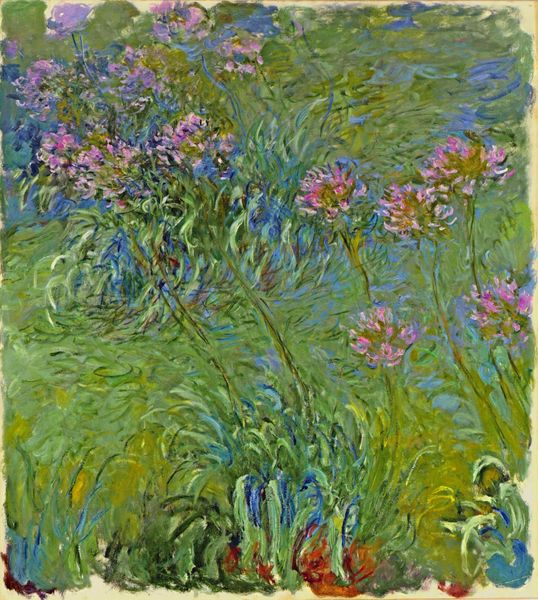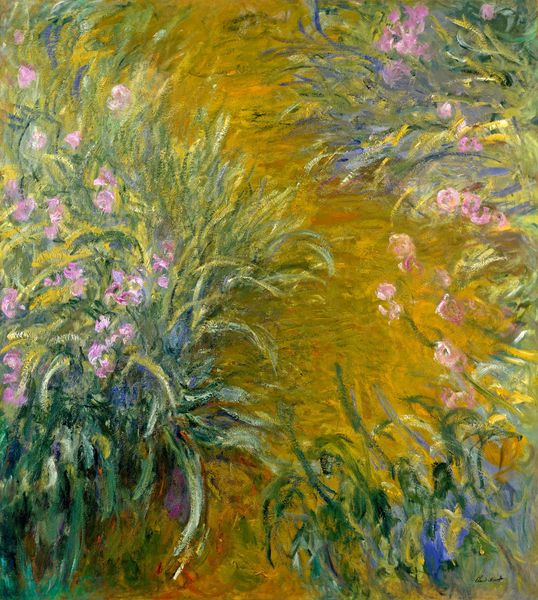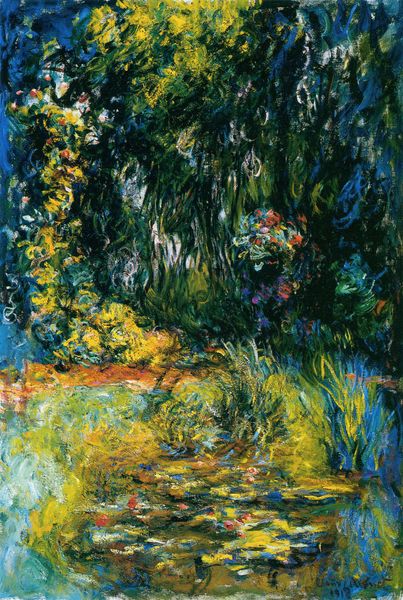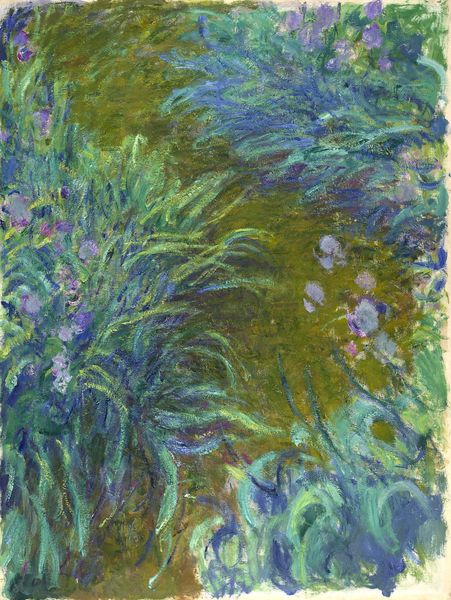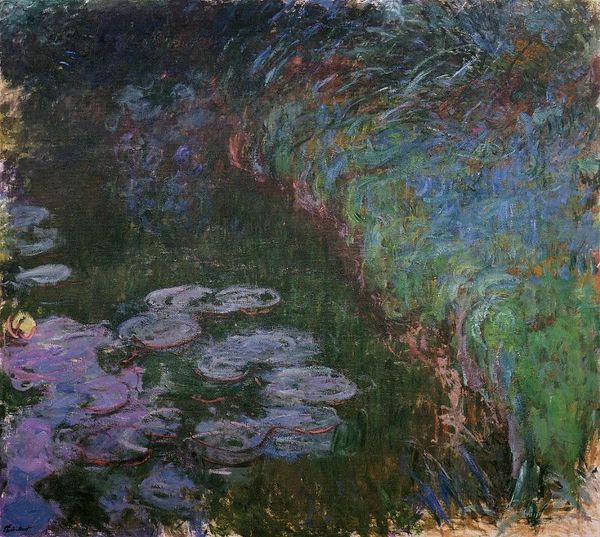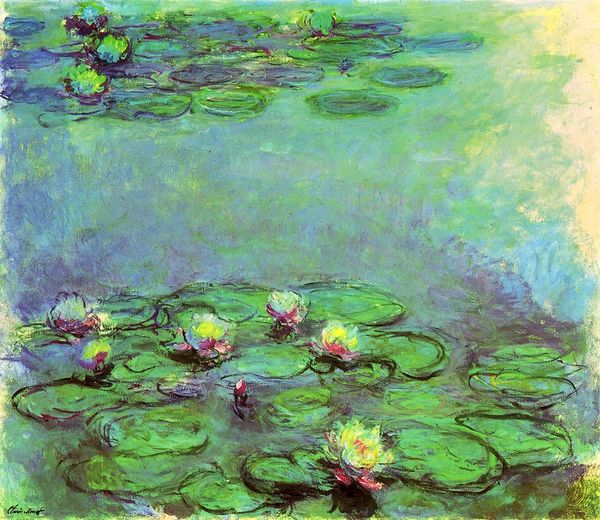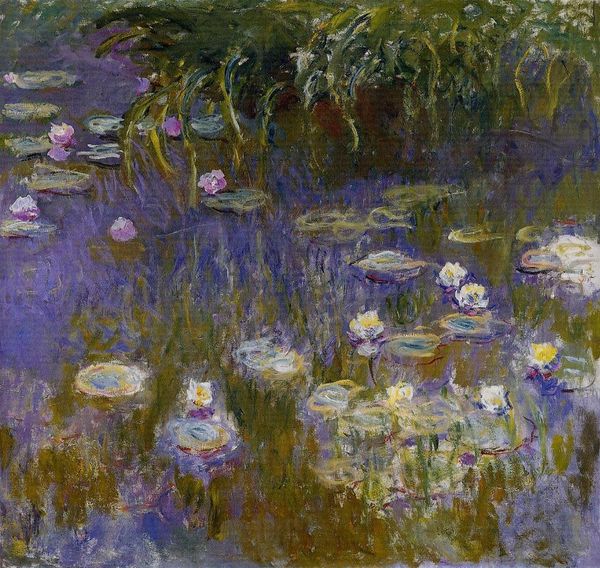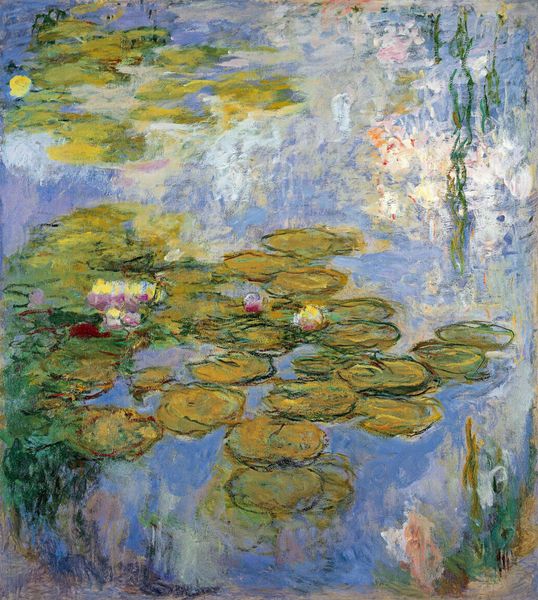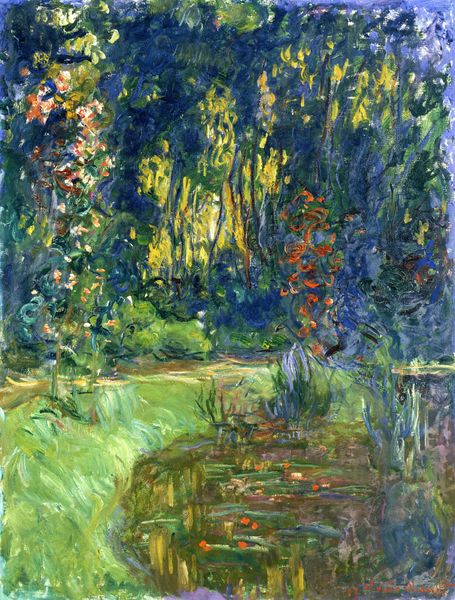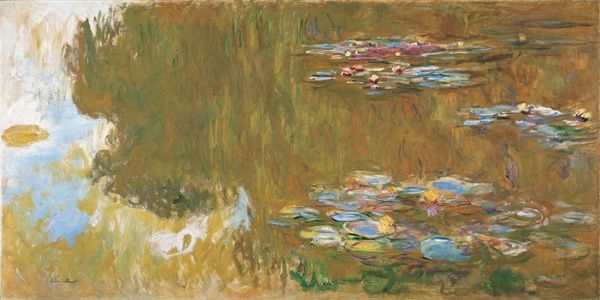
Copyright: Public domain
Claude Monet painted 'Agapanthus' using oil paint on canvas. The way he handled the oil paint is key to understanding the piece. He applied it in loose, visible strokes, almost like weaving with pigment. The materiality of oil paint itself, its capacity for blending and layering, allowed Monet to capture the shifting qualities of light and reflection on the water's surface. You can almost feel the wetness of the scene, as if the paint itself is a liquid. This technique wasn’t just about representing a scene; it was about capturing the very act of perception. Monet’s approach demanded an immense amount of time and effort, applying countless layers to achieve the desired effect. This labor-intensive process underscores a commitment to direct experience and craftsmanship. By immersing himself in the act of painting, Monet blurred the lines between observation, creation, and the sheer physicality of his materials. This reminds us that art isn't just about what we see, but how it's made.
Comments
No comments
Be the first to comment and join the conversation on the ultimate creative platform.


